The Editor and I were directed to take especial note of the single specimen of the Poa Tussock grass. It was a good looking chunk of green grass. Hundreds of individual clumped leaves reached a bit above the knees. You know you’ve earned wisdom when internally you’re thinking to yourself that you’d hit that grass hard with the mower, but from your mouth you’re heard to say: “That’s lovely, you must be very proud”.
The person who owned the property was clearly proud of their single Poa Tussock grass. Being a native grass, I’m guessing that it must have been a social ‘thing’ which conveyed some sort of virtue to the owners. That ‘thing’ sure needed mowing though, as it would be a haven for snakes. And the property was adjacent to the local creek where snakes were likely to hang out.
I’m sure that a little marsupial mouse (Antechinus) would enjoy hiding out in the poa grass, except that the property was entirely fenced. Fences keep local wildlife out of a garden, except for the super nimble ones that can slither through tiny gaps or fly over such things. “Aren’t you a bit worried about snakes?” I inquired. “Yeah they’re a bit scary and we do get the occasional snake in the garden”, came the reply. I’ll bet you do.
The Poa grass pride was a mystery, but then there were other mysteries to be observed at the property. The front fence proudly displayed a ‘Land for Wildlife’ sign. The sign made me wonder why they’d fenced the property in the first place if they felt that way. Perhaps the author George Orwell was correct when he suggested in ‘Animal Farm’, that some animals are more equal than others? I’ve observed a number of those signs dotted about the rural landscape, usually attached to gates and/or fences. Fortunately the fenced out wildlife can’t read the signs, otherwise they might object to the reality! But who knows, maybe the signs may refer to land elsewhere?
Fencing is done on such a large scale right across the landscape that it must be an absolute nightmare for wildlife to navigate. It also excludes wildlife from areas where they’d otherwise be able to get a feed, and so they’re stuck having to eat the vegetation on the side of roads – with the risk that brings. And you don’t have to travel far at all to spot fenced land which is entirely over grown. Very little wildlife resides in such places. When plant life gets so thick, there is little for the critters to eat, and anyway they can’t easily move around such areas.
We do things differently. A local farmer once quipped to me that with the unfenced orchards, we’d created a supermarket for the wildlife. In warmer growing seasons we’d get a bit of produce and the wildlife would also get some. But this cold growing season, the local farmer is right, the wildlife is getting more of the produce from the orchards than us – what little produce there is. That’s OK, the Editor and I can purchase fruit grown elsewhere and the local birds etc. can’t do that trick. Anyway, with less fruit the trees get to put more energy into growing.
We’re trying to find the middle ground with incorporating all of the local wildlife into the orchards and gardens. The task involves growing plants and then observing the results. Only one crop is completely fenced off, strawberries. Everything loves strawberries, even the dogs.
The long term plan with the wildlife is to out-produce their needs. Very few species here are transitory and most live in or around the farm all year around, so the upper limit on all of their populations is set by the lean winter months. Plus the existing population tends to defend their territory against all new comers. The bird world is particularly brutal on that front, and new species have a hard time of it.
There are unexpected benefits with the wildlife. The birds will consume most insects, even the occasional locust plague gets dealt to. And the kangaroos, wombats and wallabies all happily provide plenty of manure which they spread around – for free. But really, their antics bring us a lot of joy, even when a wallaby is performing a karate chop on the limb of a favourite fruit tree.
But you know, the wildlife will eventually win so it’s probably best to learn how to live with them all. And fences take a lot of resources to construct, then further resources to maintain – and nature eventually eats all fences.
Editor says get rid of the next story: Lipstick in a time of CORVID.
For a while now I’d been meaning to write about the most horrendous thing which happened to me last year, and candidly, the Editor is sick of hearing about it. It’s been said before that a problem shared, is a problem halved, and so I shall share my awful encounter with you lovely readers. Thus sparing the long suffering Editor.
So last year in between crazy super long lock downs, I was finally able to visit a cafe and not have to purchase take away coffees. Life is a bit short for take away coffee, but when it is the only option, the discerning person must make do.
The coffee came with a glass of water which I organised. The water tasted a bit unusual, but I didn’t think much about it. Turns out that the unusual taste was bright pink lipstick on the rim of the glass. And this industrial grade waste product had clearly gone through a commercial dishwasher intact, and was now on my lips and in my guts. I felt mildly ill as I could continue to taste it, and I felt so much closer to whomever had originally worn it.
The Editor thought that it was amusing and noted that it was a good colour match for my lips. Feeling increasingly uncomfortable, I made it home without regurgitating coffee.
Turns out this stuff is super hard to wash off. Distress levels were rising throughout the day, and I may have used some rather filthy language to convey the inner turmoil of my mind. Nothing I tried washed off that revolting product. It wasn’t until the next day that the stuff had worn off. That product is not something found in nature.
Lesson learned: check glasses before using them, you never know what you might find.
Thanks for indulging me, and I feel a great sense of catharsis at having shared that experience. And the Editor will surely be pleased at the prospect of not hearing about the incident again!
The weather this week was bonkers! The tail end of Ex tropical cyclone Seth smashed into another storm front, and, crazy weather.
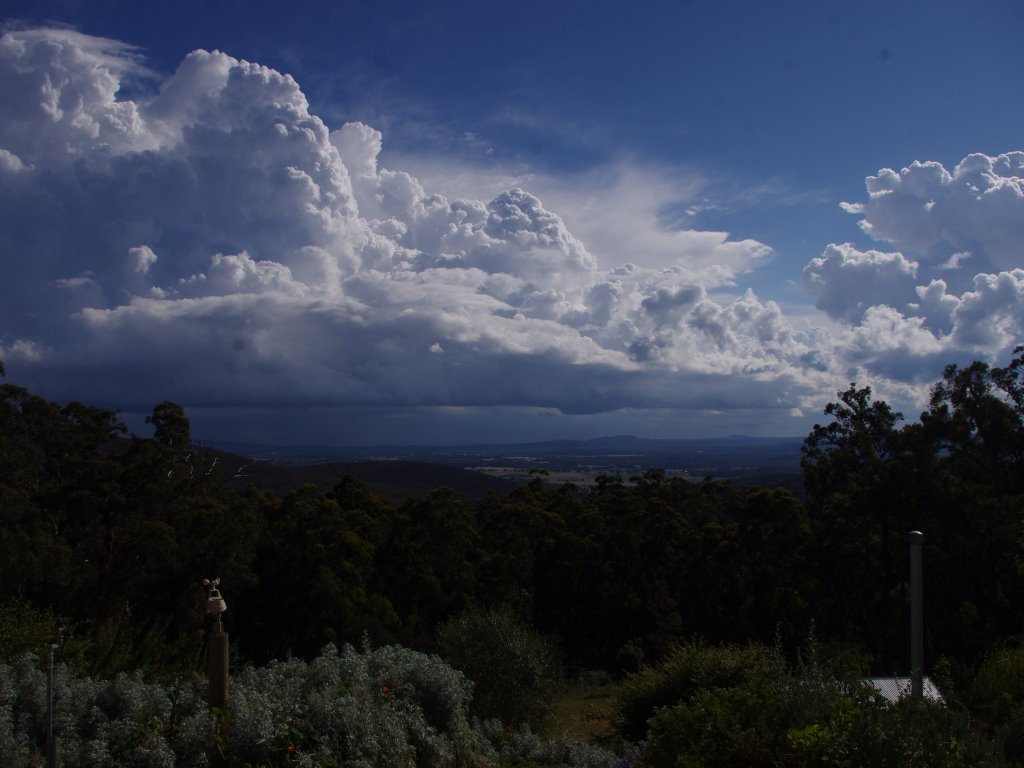
Tall clouds like the one in the above photo can deliver half an inch of rain in a few minutes. Some parts of the state received four inches of rain in under an hour.
At least the sun was shining when I took the above photo. Three days last week – and this is the middle of summer – fog settled over the entire region. Fans of the belief that renewable solar energy will save industrial civilisation may want to take a close look at the next photo:

Despite the weather we did heaps of work on the new shed project. Four mid-sized water tanks were relocated to where they can collect water from the shed roof. In order to move the tanks they had to be emptied, otherwise they are really heavy.
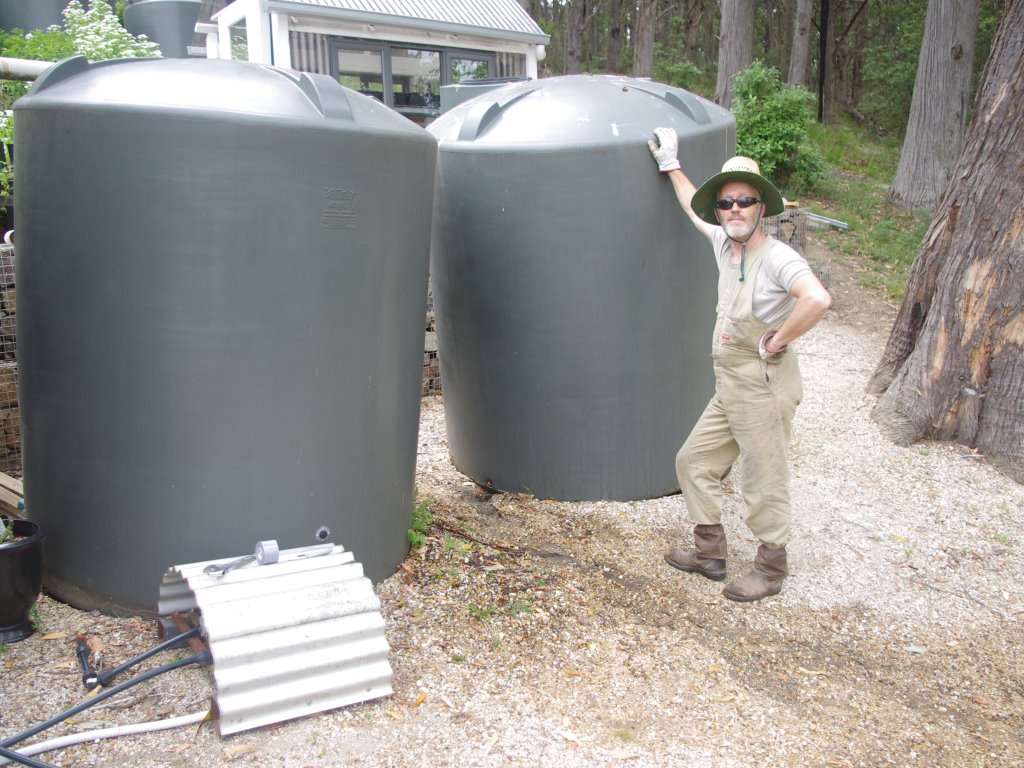
Fortunately, water tanks have very strong walls and are round – you can roll them to where you need them. And we rolled all four tanks near to their new location. They’re quite large when they’re looming over you, and you definitely don’t want to slip over when you are rolling them downhill.

The insides of the tanks were given a clean with a high pressure washer, although they were mostly clean to begin with.
It wasn’t too difficult to lift the tanks into their final positions.
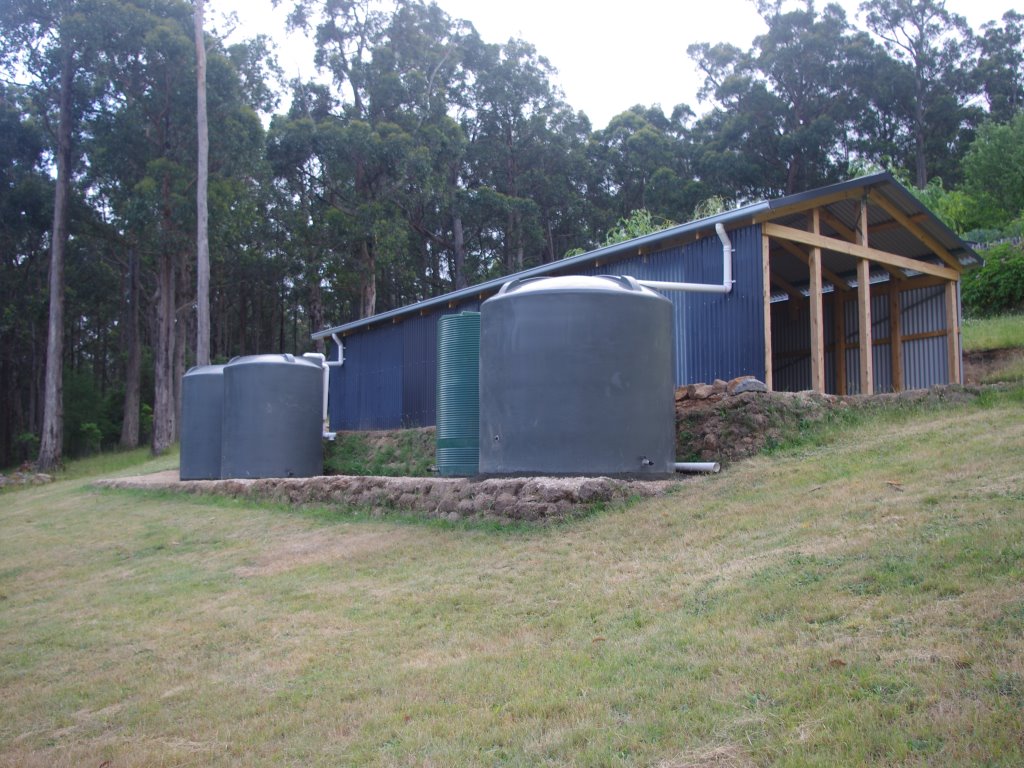
Drains were installed on the shed, and PVC pipe moves the water from the drains into the tanks. The next photo shows the guttering drains and pipes on the uphill side of the shed. Those pipes travel under the shed floor.

Given the sheer cost of barn doors, we decided to make our own from marine grade plywood. I love that sort of detailed carpentry work and it is nice to take something as plain as a sheet of marine grade plywood, and make something interesting and aesthetic.


The barn doors have received a few coats of high quality paint, but will probably get a few more coats before they’re installed.
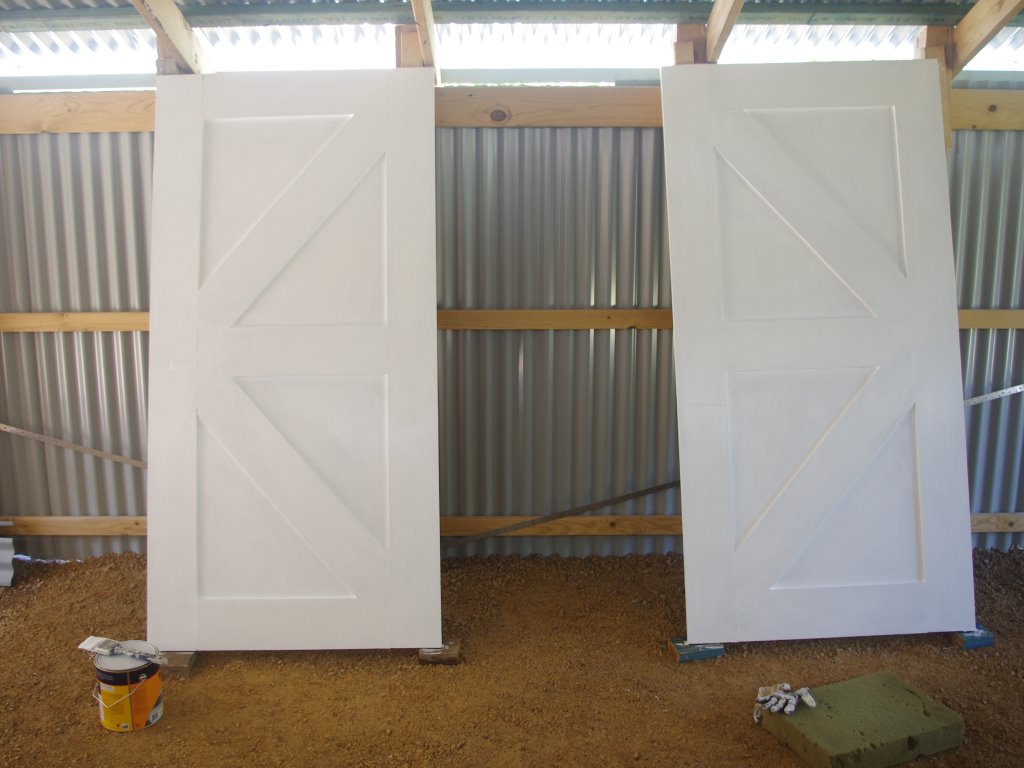
All of the carpentry on the shed has now been completed. And we even managed to find some time to install the two old windows at the far end of the shed.
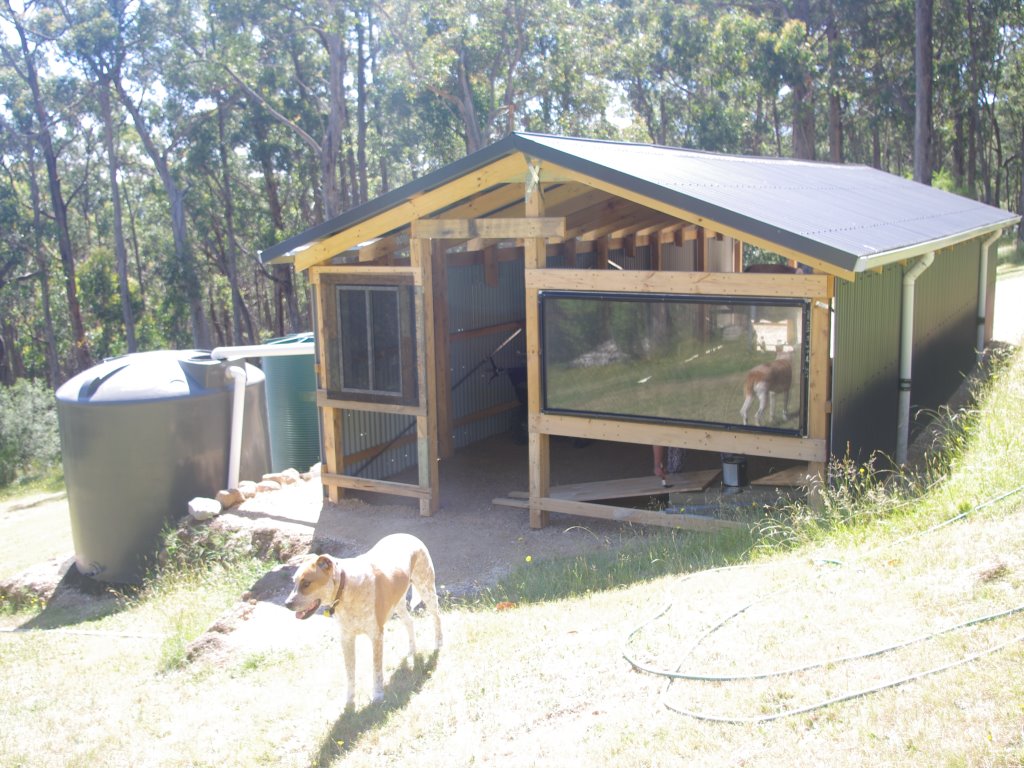
Watching all this work done in high humidity simply exhausted Ollie. Spare a thought for the poor scamp.

With the daily threat of storms, we decided to take advantage of the rainfall and humidity and plant out the last of the tomato seedlings. It’s really late in the season to do so, but you never know. The garden terraces where many of the vegetables and roses are grown are looking really good.
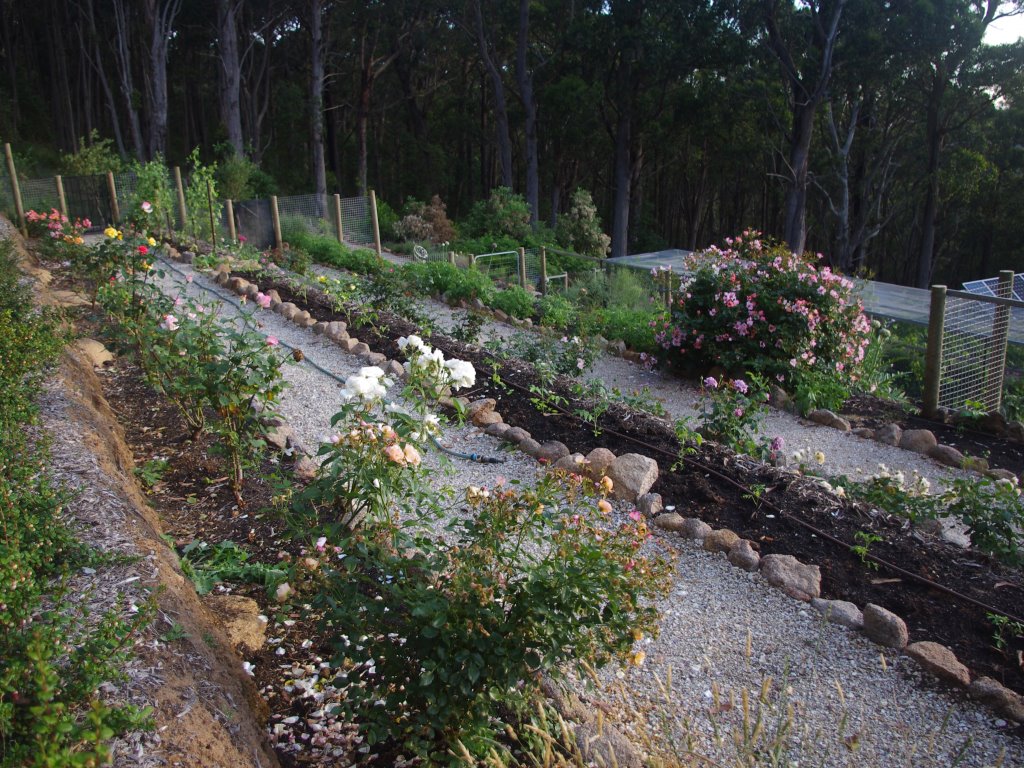
There are more globe artichokes than we can eat, and some of them have become rather large.
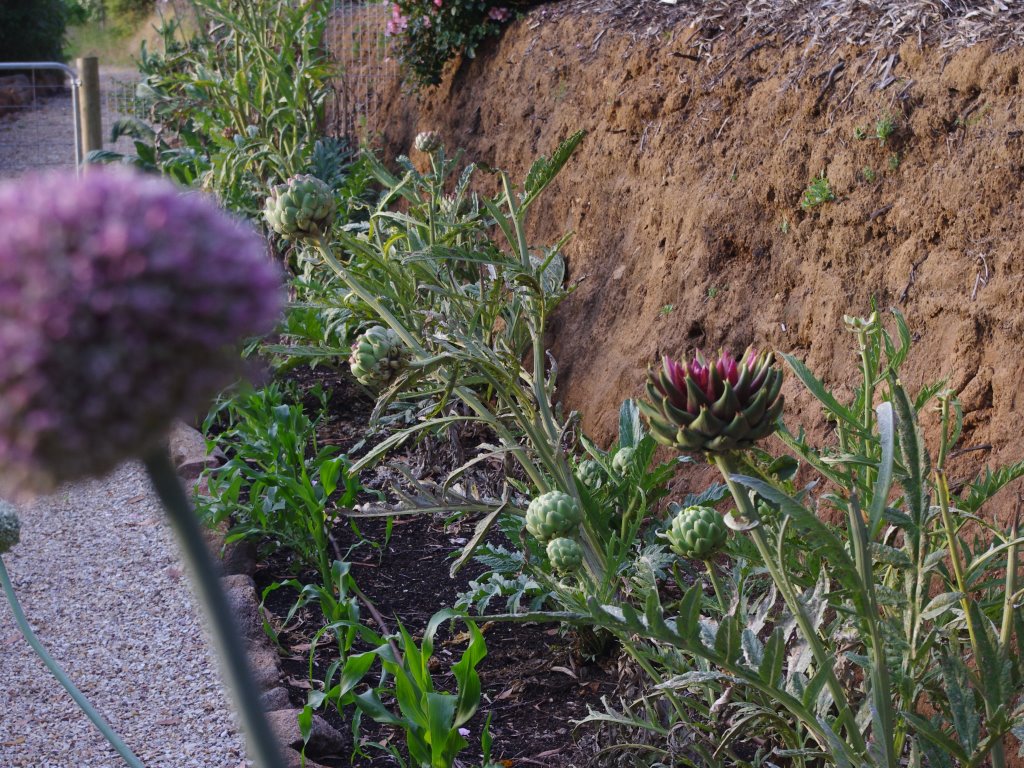
The peas are producing heaps of very tasty pods. We planted a really random collection of heritage varieties and will save seed from the best of them.
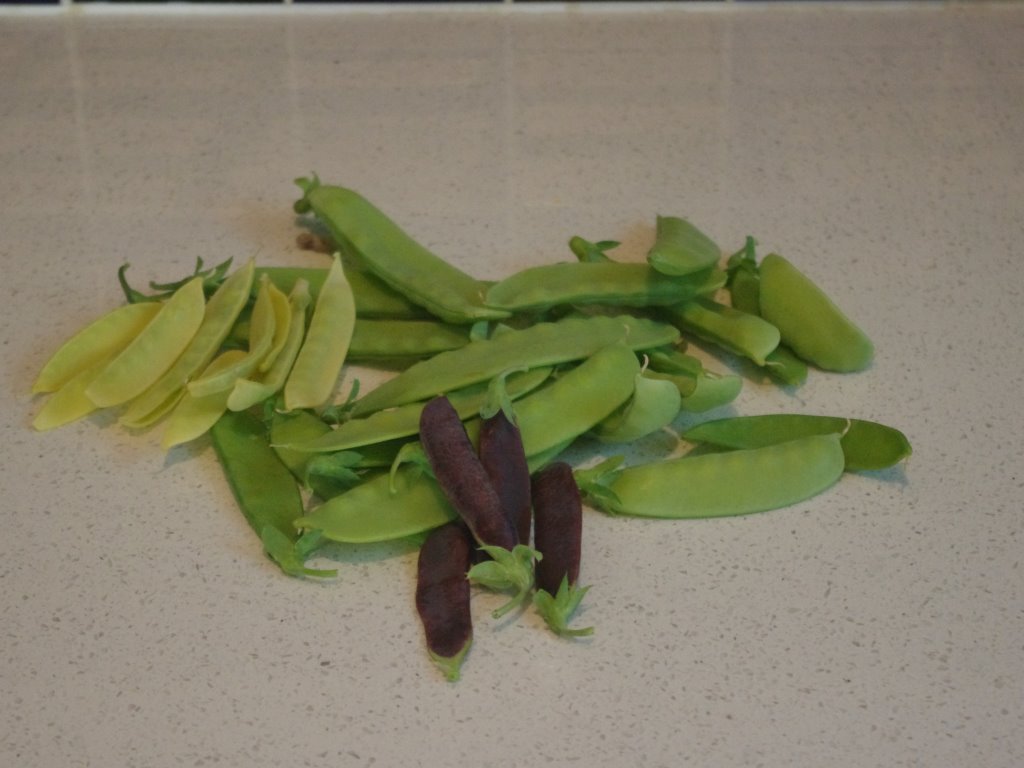
Onto the flowers:
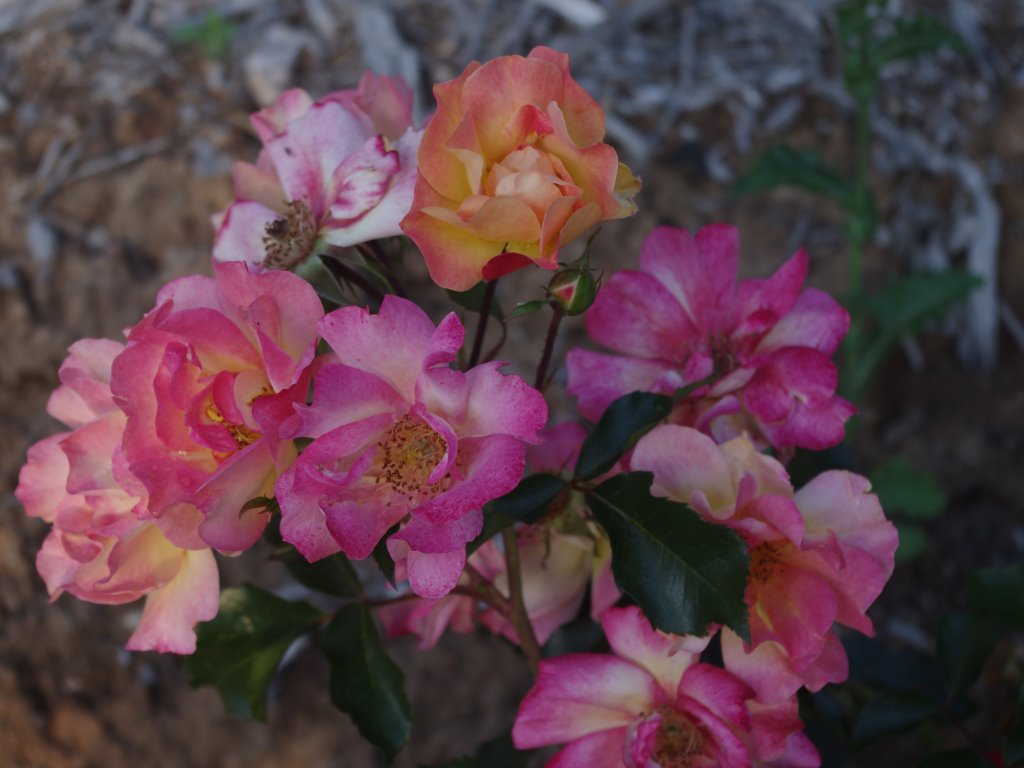
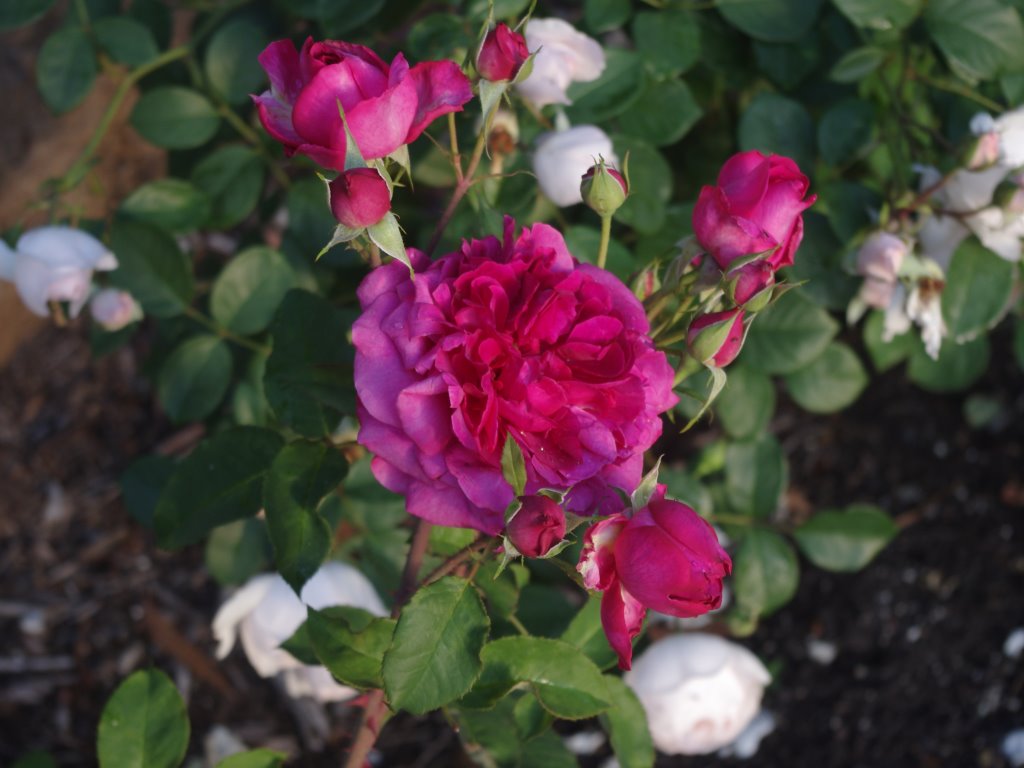
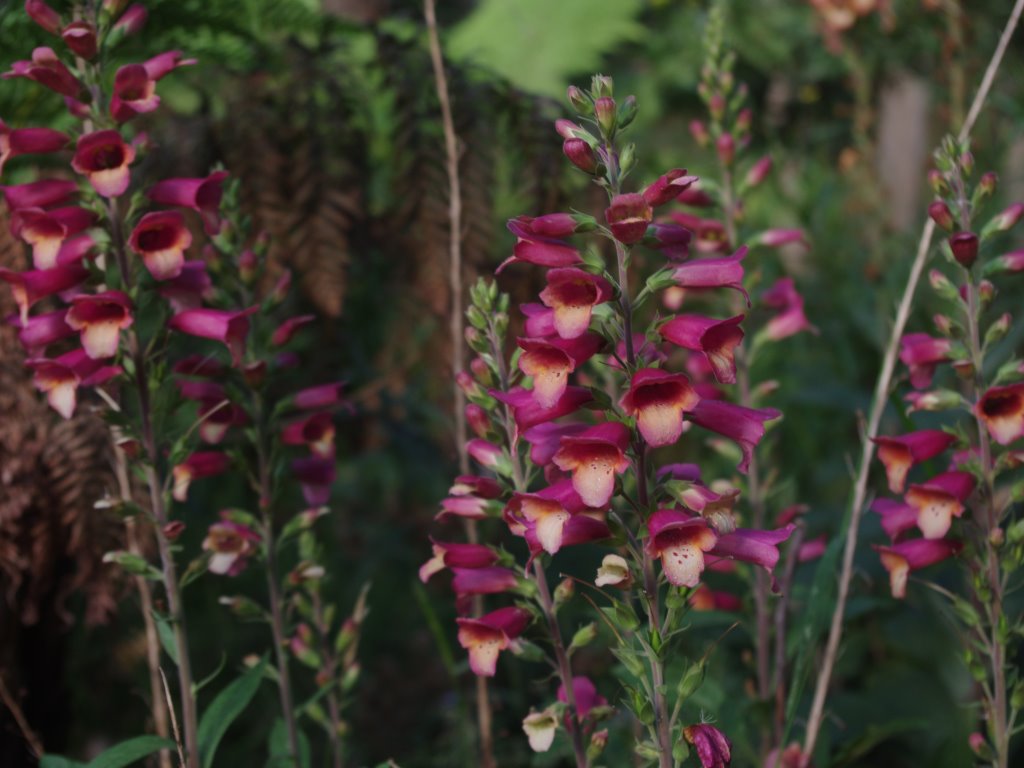
The temperature outside now at about 7.00am is 14’C (57’F). So far this year there has been 31.0mm (1.2 inches) which is up from last weeks total of 0.6mm (0.0 inches)
